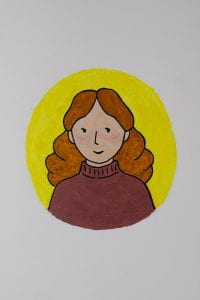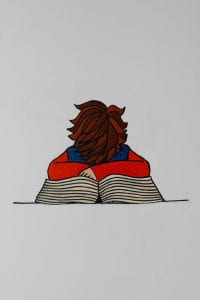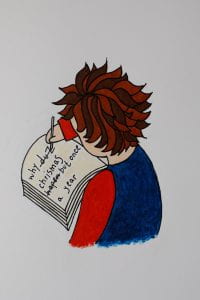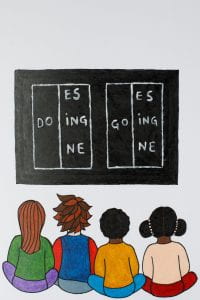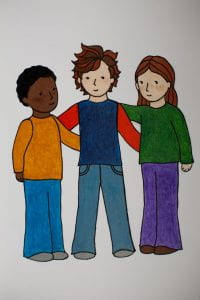By: Jeffrey Bowers | Javiera Morales, Instagram: donde.la.javi; Facebook: Donde la Javi
Hope you enjoy the book! What I want to emphasize here is that our story is not only about Jeff learning to read, but also an introduction to a new form of reading instruction called Structured Word Inquiry (or SWI). SWI is an alternative to phonics and whole language that are, by far, the most common approaches to reading instruction in schools. Here I outline some of the problems with these standard forms of instruction and show why SWI is a promising way forward.
My hope is that you are sufficiently intrigued by the illustrations of SWI in our book you will read about the Science behind the story.
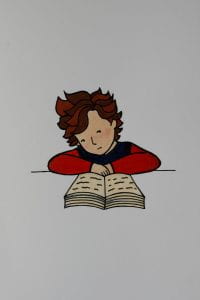
Jeff really really did NOT like school.
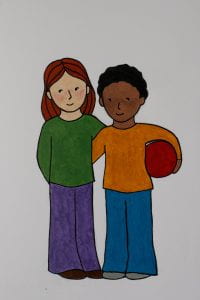
He liked his friends, especially Anne and Peter,
and some of his teachers, especially Mrs O’Reilly.
But Jeff hated reading and writing. And he needed to
read and write in almost EVERY class. Except gym.
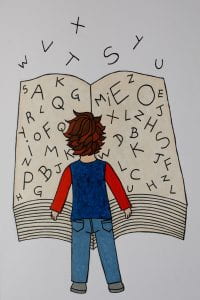
Reading was just hard, and it did not make sense!
Why is there a G in SIGN? Who knows.
I keep getting everything wrong Jeff sighed
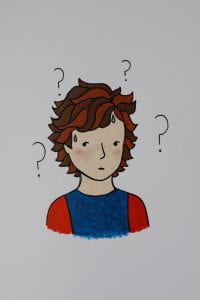
Not even the teachers could explain why my spelling of “duz” is wrong. Or explain why there (their?) are three ways to spell TO, TOO, and TWO. That W is just crazy!
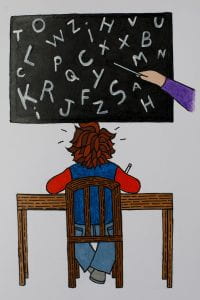
It is just that way they say. Just remember.
But I can’t! I keep getting it wrong, even after extra practice.
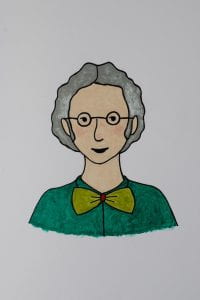
Then one day….. came a funny man in a bowtie. All the way from England. I quite liked the way he talked right from the start. But the amazing thing is that he made words make sense!
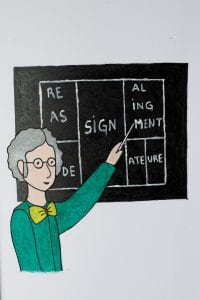
Why is there a G in SIGN you ask?!? I can tell you why. And he drew a picture like this (morphological matrix of SIGN).
Why don’t you spell DOES with a Z? Good question! And he drew another picture. Pointing at the blackboard he said. Who says DOES and GOES are irregular words? They could not make more sense!
He even made sense of CHRISTMAS:
CHRIST + MAS → CHRISTMAS.
And he told us all a secret: Spellings make sense when you look at them in the right way.
It is not all about sounding out words, which I always HATED. It is also about what words *MEAN*.
Why three different spellings for TO, TWO, and TOO? Because they mean different things!
Why the W in TWO? Here is a hint, check out the link to: TWIN, TWICE, TWENTY, and TWIST! Who knew?
It is kind of fun figuring things out rather than not remembering things.
I like it when things make sense.
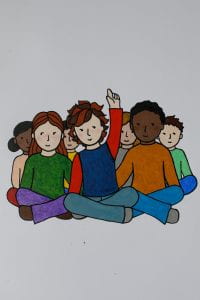
Now I’m liking school a lot more.
I still make mistakes. But not so much anymore.


